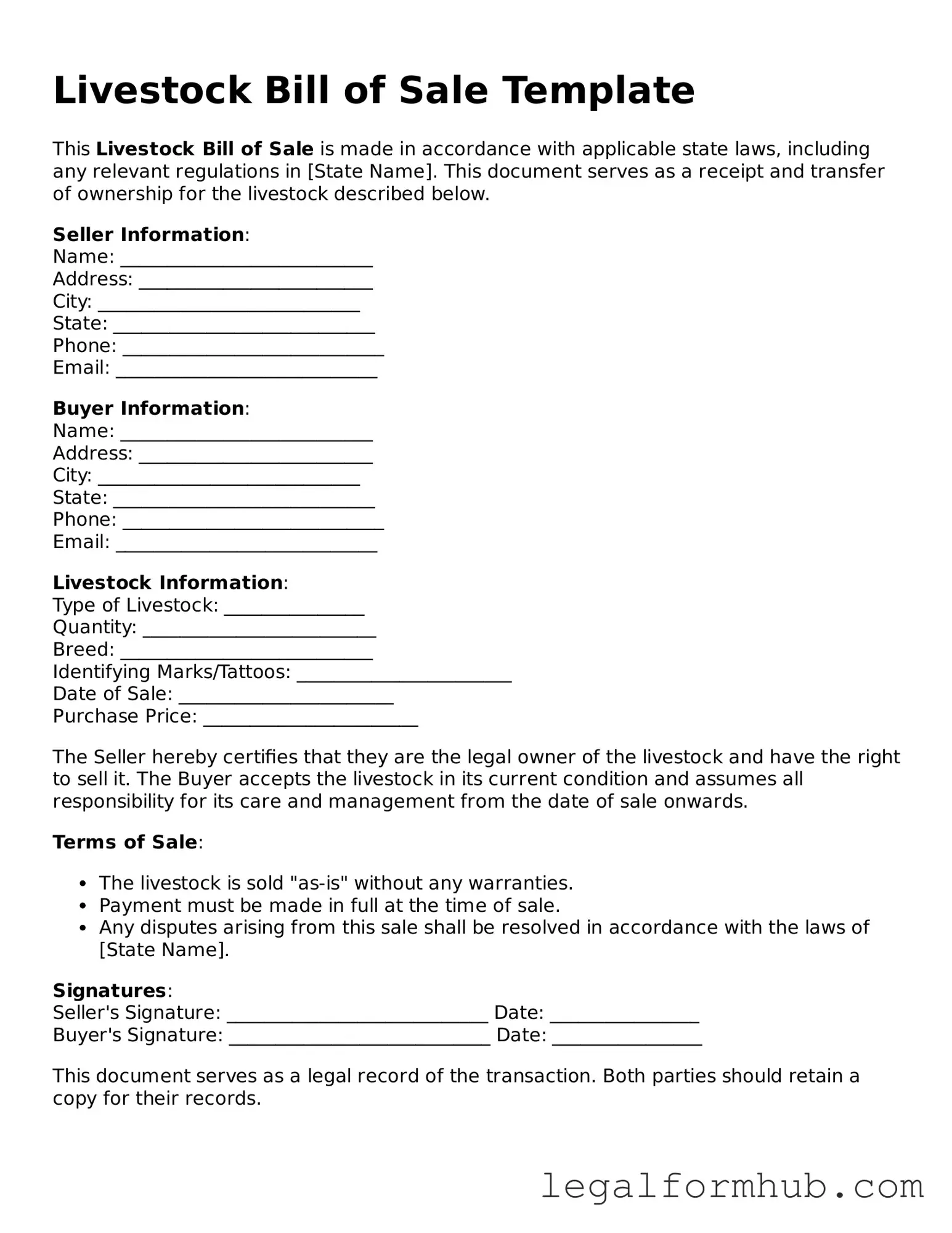Printable Livestock Bill of Sale Document
A Livestock Bill of Sale form is a legal document that records the transfer of ownership of livestock from one party to another. This form serves as proof of the transaction and outlines essential details such as the type of livestock, sale price, and the parties involved. Understanding its importance can help ensure a smooth and transparent sale process.
Open Livestock Bill of Sale Editor Here
